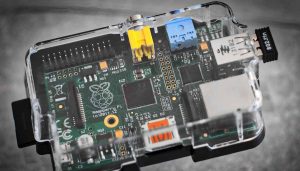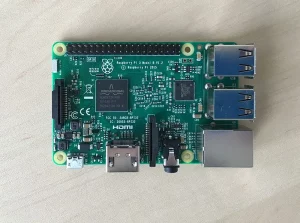
Key Components of AI Platform
Artificial intelligence platforms model cognitive abilities carried out by the human brain, Issue-solving, acquiring knowledge, social awareness, and general intelligence are some examples. Such systems are a combination of hardware and software that makes it possible to run AI algorithms.
AI-based software platforms offer users a set of instruments for designing intelligent apps. While using such platforms, it becomes possible to utilize ML, machine vision, text processing, and others. Let’s have a deeper look at what it is used for, what it can offer, and what it consists of.

Reasons for Utilizing the AI Platform
Software systems and facilities in this category are used most often by programmers and data analysts. The systems are divided into two major classes: application platforms and general-purpose platforms.
AI application platforms are equipped with ready-made application algorithms (image or voice recognition, human language understanding, predictive analytics) and tools for operating with data (data visualization, drag-and-drop, data analysis). General-purpose platforms have common tools that require special programming skills to create solutions for business requirements.
Crucial AI PaaS components
Initially, let’s think about AI PaaS from the point of the traditional platform as a service (PaaS) concept. A cloud vendor can offer tools for creating, launching, and maintaining apps through PaaS. A usual PaaS architecture typically consists of two primary groups of app development elements: infrastructure and a platform.
Basic PAAS architecture:
- servers, network, storage;
- data centers;
- operating systems;
- middleware;
- virtualization machines;
- development tools, database management, and business
Now, let’s return to AI PaaS. AI is mostly about handling vast volumes of data, which necessitates massive computing resources. As a result, numerous AI platform service producers, like the usual PaaS model, give infrastructure facilities, computing services, and virtualization functionality. All of the big data needed to develop ML techniques and enhance AI Innovative approaches must be kept somewhere. As a result, data storage assets are standard items of AI PaaS services.
Two elements differentiate AI PaaS from other PaaS designs: trained and tested ML techniques and AI APIs. Let us examine both of these elements in greater detail.
Pre-trained ML models
ML techniques and designs are central to incorporating AI-based alternatives: they analyze and interpret data, focus on solving particular things, and give the desired outcome. Constructing and training ML from scratch, on the other hand, necessitates massive resources and experience.
As a result, numerous cloud computing providers offer pre-trained systems and algorithms that can carry out the following particular things:
- extracting functionality;
- predicting things;
- speech recognition;
- carrying out complicated calculations;
- sorting video recordings;
- detecting dynamically changing objects and videos;
- image
Several pre-trained AI solutions are not configurable and can only undertake a restricted set of tasks whereas others can be tailored to meet the requirements of a specific project.
APIs for artificial intelligence
APIs (app programming interfaces) help to better incorporate AI performance into your application. Several providers offer ready-to-use APIs for different AI functions as part of their systems or as separate services.
The most popular APIs provided by AI vendors offer.
- computer vision;
- human language understanding;
- converting writings to speech;
- feelings
Overview of the Main Functions and Capabilities While Looking for Top AI Platforms
Administration
The ability to administer allows you to configure and manage the functionality of the system, as well as manage accounts and access rights to the system.
Video Data Analysis
Video data analysis allows you to extract information from the video stream using artificial intelligence methods, and analyze the information received to identify objects of interest. In the business environment, intelligent video data analysis is used to monitor events in public places, monitor cars, control production facilities, and solve other tasks.
Analysis of Visual and Graphical Data
The analysis of visual and graphical data enables you to extract data from graphical data, classify, store and conduct a primary analysis of the data received. In a business environment, visual data is analyzed to recognize documents, identify persons and identify other event data from images and video sequences.

Text Data Analysis
Text data analysis is a tool for obtaining high-quality information from the text by structuring the source text, analyzing text patterns, and evaluating the meaning (semantics) of the text
Audio data Analysis
Audio data analysis enables you to extract data and meaning from audio signals, classify, store and conduct a primary analysis of the received info. Frequently, the means of observation and methods of interpretation vary based on the reasons for analysis, but most often sound analysis is performed for the reason of voice and speech recognition
Structured Data Analysis
Structured data analysis lets you utilize data that is organized in the form of formatted repositories, databases, spreadsheets, and other structured formats in which data items are addressed for more effective processing and analytics.
Data Import/Export
The capacity to import and/or export data in the product enables one to download info from the most popular file formats or upload working data to a file for further use in other software.
Multi-user Access
The possibility of multi-user access to the software system provides simultaneous operation of several users on the same database under their accounts. In this case, users may have different access rights to the information and functionality of the software.
API Availability
Often, when using modern business software, there is a necessity for automatic data transfer from one software to another. For example, it may be useful to automatically transfer data from the Customer Relationship Management System to the Accounting System.
To ensure such and similar interfaces, software systems are equipped with special Application Programming interfaces (English API, Application Programming Interface). Using such APIs, competent programmers will be able to link two software products to each other for automatic information exchange.
Reporting and Analysis
The product has reporting and/or analytics functions that allow you to get systematized and visualized information from the system for subsequent analysis and decision-making according to the data.
Distinctive Functions of the AI Platform
To qualify for inclusion in the category of AI platforms, a software product must:
- provide the capacity to build intelligent apps with AI support;
- enable users to create ML techniques or provide ready-made algorithms for creating applications;
- provide the developer with the capacity to link data resources to their algorithms to provide machine learning and performance adaptation.
Conclusion
Artificial intelligence is being presented and effectively established in our daily lives in areas such as communication, timekeeping, skills training, health, safety precautions, traffic monitoring, purchasing, and advertising.
In scientific research, artificial intelligence is employed to design experiments, train resources, analyze information, and reduce complexity. You can do your own research and opt for best AI platforms and yes the AI platform pricing is also a worth considering point while selecting a platform!


